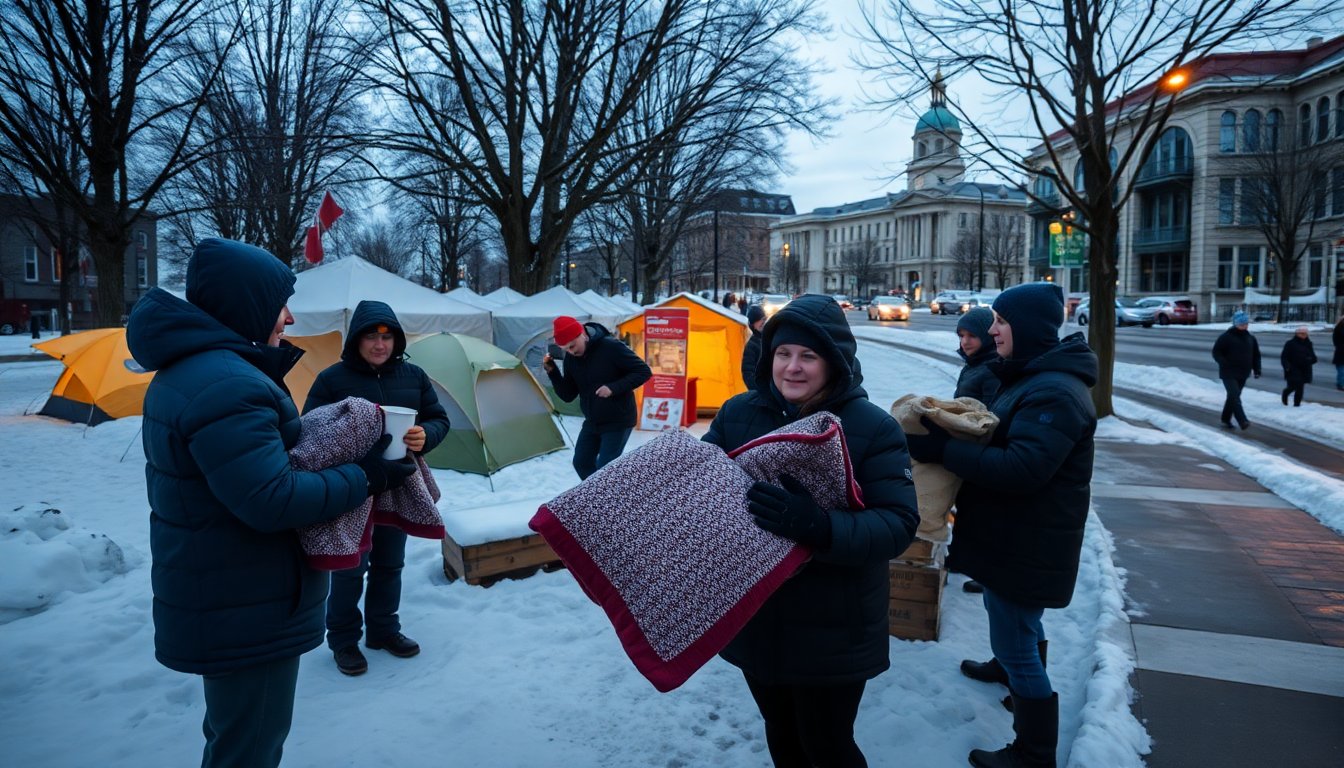Table of Contents
As winter approaches, the city of Victoria, British Columbia, is set to implement a new strategy to keep its most vulnerable residents warm. This initiative aims to improve the effectiveness and reach of support services for individuals experiencing homelessness.
Dan Atkinson, the city’s Fire Chief, has outlined the city’s response plan, which promises to be more adaptable than previous efforts. The dual-level strategy will activate when existing shelters reach capacity, ensuring assistance is available to those in need.
Understanding the dual-level response model
This year, the city plans to introduce a two-tiered response to address the urgent needs of its homeless population. When all shelter options are filled, the city will engage with the community through enhanced wellness checks. This approach will not only provide immediate assistance but also distribute essential resources to help individuals stay warm and dry.
Community outreach and resource distribution
The initiative includes the activation of warming tents and warming buses, which will serve as critical hubs for those seeking refuge from the cold. Additionally, hundreds of kits filled with items designed to combat harsh winter conditions will be distributed throughout the community.
Atkinson emphasized that each municipality in the region must evaluate its own risk factors and develop a tailored response plan. Although Victoria has completed its assessment and believes its plan effectively addresses local needs, Atkinson did not comment on the adequacy of responses in surrounding areas.
The regional dynamics of homelessness support
Victoria’s city council has noted that neighboring municipalities, such as Oak Bay, Esquimalt, and Sidney, often rely on Victoria’s resources for cold weather response efforts. Councilor Krista Loughton highlighted the challenges posed by this reliance, mentioning that not every local government is participating in the coordinated response.
Challenges faced by neighboring municipalities
For example, Sidney had the opportunity to establish a warming center for a small group of twenty homeless seniors, but the council opted against it. Loughton expressed concerns, stating that such decisions reflect a troubling lack of commitment to addressing homelessness in the region. Meanwhile, Oak Bay and Esquimalt assert that there is no immediate need for additional support, a stance Loughton believes merely shifts responsibility onto Victoria.
According to the latest homeless count conducted in Victoria, at least 318 individuals are living without shelter, while the total number of people experiencing homelessness across the region stands at 1,794. Among them, 493 individuals are currently staying in emergency shelters, indicating significant demand for supportive services as temperatures drop.
Looking ahead: Building a sustainable support network
As winter nears, Victoria is not only focused on immediate solutions but is also committed to developing a sustainable support network for those in need. By implementing a proactive and collaborative approach, city officials aim to ensure that vulnerable residents receive the necessary care and resources to endure the cold months ahead.
To achieve this, ongoing partnerships with local organizations and community stakeholders will be crucial. These alliances will strengthen the response framework and enhance the overall effectiveness of outreach efforts, creating a more resilient safety net for the city’s most vulnerable populations.
Dan Atkinson, the city’s Fire Chief, has outlined the city’s response plan, which promises to be more adaptable than previous efforts. The dual-level strategy will activate when existing shelters reach capacity, ensuring assistance is available to those in need.0


